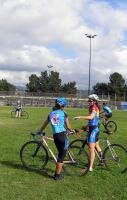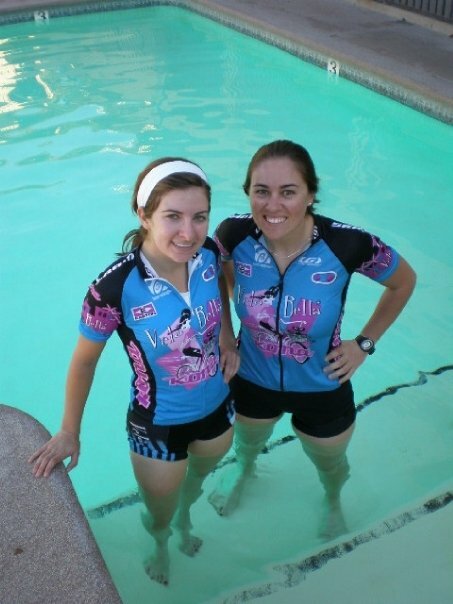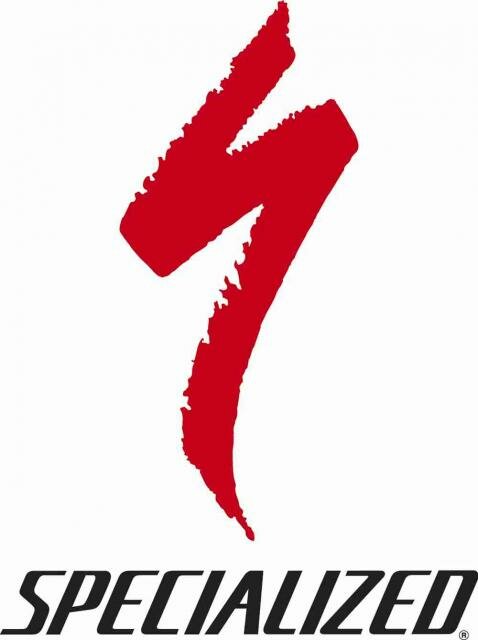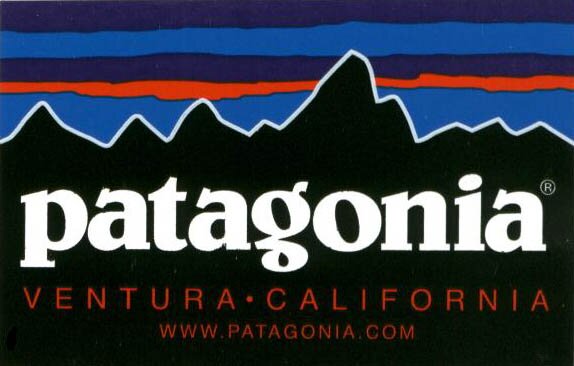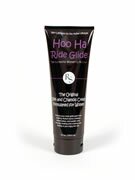Announcing Surf City Cyclocross
October 5, 2009

Surf City Cyclocross returns this year as a five race series. Yes, that’s right, five races. The series begins 11 October at Soquel High School. Velo Bella will host a clinic led by local ‘cross stars before the first race. The Surf City series runs through January and includes the traditional Halloween ‘cross presented by Velo Bella. Want to know more? Clicky on over to Cyclo-x.com and read all about it.
Surf City CX Clinic Presented by Velo Bella
September 28, 2009
Surf City CX Clinic Presented by Velo Bella
Brooke Miller at one of our CX Clinics in Soquel
Interested In Cyclocross?
Want to hone in your techniques or fine tune a particular cross tactic?
Then the Velo Bella/Surf City CX Clinic is for you!
Beginners encouraged, seasoned riders welcome!!!
As is tradition, VB will host this year’s Clinic before the 1st Surf City race of the season
on Saturday October 10th at Soquel High School in Santa Cruz County.
(race on Sunday October 11th)
Local Top Riders will lead the clinic on the actual Surf City course
and lunch will be served (included in fee).
Only $20 and Juniors are always FREE (but do require a Parent/Guardian waiver).
For more info, please see: http://www.cyclo-x.com/clinics.html
And for questions, please email Miss Mary Perez at
(If interested in instructing, please email Miss Mary)
Recovery Secret
January 23, 2009
Brittany Growdon demonstrates the Super Secret Patented Bella Training Camp Recovery Technique.® Soak until done. For best results, follow with a session of winervals!
Tips for Holding Position in the Pack
February 7, 2008
From Michael ~
No doubt about it – holding position in a pack is definitely one of the more advanced skills we can learn in bike racing. It’s hard and really takes a lot of concentration and … sometimes … effort.
But, the more you practice it and incorporate it into your everyday riding – the less energy you’ll end up using and the more it will become instinctive and 2nd nature.
– – –
Where to be in the pack?
Personally, i live by the mantra – near the front, but not at the front.
Meaning ~ riding in the top 1/3 of the pack to get the benefits of the draft and to be able to cover attacks that shoot out the pack or make my own attacks. As we have all found out … riding in the back 1/3 of the pack in bike races is MUCH harder physically than riding in the top 1/3. When in the back of the pack, we have to accelerate harder out of corners and there is little ‘wiggle-room’ to slide back if there is a hard section of riding (climbing or crosswinds, for example). Once you’re out of the protection of the pack … it’s dang hard to get back and often it can mean a long solo effort to the finish.
So, my goal is to always try and ride in the top 3rd of whatever sized pack i’m in. If i fade back a bit, i don’t stress about it … but i also make the conscious decision that i don’t want to be there and MUST move up.
How to move up in the pack?
The vast majority of the time, moving up in the pack is an exercise in using as little energy as possible to get the job done. And, there are two main ways to do it:

- Speed differential ~ here are a few scenarios when this can occur:
– when you see a slowing in the pack and there is an opportunity for you to NOT hit your brakes, and instead, safely slide up and around the growing mushroom of the pack, making your way past rider after rider with your continued speed as they all slow down (for whatever reason). The keys to this are to make your initial lateral movement out of the pack predictable and relatively slow so that if there is a rider behind you desiring to do the same thing, they have opportunity to recognize what you’re doing and adapt their action. Also you will want to be relaxed and make sure you are watching the riders as you pass by them, trying to predict if any of them will scoot out in front of you. And lastly, you will want to know EXACTLY what the terrain is ahead of you. If there is a sharp turn coming up, that may not be the best time to use this tactic to move up in the pack … because you might just lose all those places just past in the pack as you brake awkardly to set up for the turn.
– at the top of a hill: often, the few meters right after a small climb offer a good place to move up in the pack. Riders will often lay off the gas a bit and the speed will drop as they recover and look around at the damage done after the climb. 4 or 5 seconds of continuing the same effort you had up the climb as you crest over it will often push you past many riders in the pack without a huge amount of energy used. There isn’t much downside to this tactic as it is often save AND it can sometimes be a wee bit intimidating to your competitors to see you spinning smoothly and quietly past them after a hard little kicker.
– as a descent levels out: many times the group will slow down at the end of a descent because all of a sudden someone has to pedal hard to keep the speed up (instead of just coasting along). This is often the easiest way to move up in position because you can pedal at a moderate amount of effort to maintain a much faster speed than those continuing to coast. However, this calls for an increased awareness of what riders are doing ahead of you. You’ll want to concentrate hard on predicting what riders will do ahead … focusing on if riders will be moving into your line of trajectory past the pack.
- Riding the wheel ~
often this is the most efficient way of moving ahead in the pack while the speeds are still high. it can also be the trickiest.
When you’re in the pack and you see someone riding in the wind, passing and moving up in position … heck, why not hop on their wheel and take the ride? The trick is, as you see them moving past you, slightly … ever so slightly start to move an inch or two towards them (they are already moving past you at this point). Then, as you’ve started that few micro-seconds of movement towards their bike, just glance back in your peripheral vision to see if there is a body right behind them.
The key is … to glance and use your peripheral. I’ve found that riders turn their heads too much and ignore the significant range of vision given to us naturally by our eyes. Right now, at your computer, just move your eyes completely to the right. See how far you can see to behind you? Now, place your hands on your keyboard and turn your head and look to the right and behind you. Go ahead and do it.
Did you feel your shoulders turn?
Yes, that’s the key. Your shoulders turned, didn’t they … ever so slightly. And – when you’re on the bike, that’s exactly what happens … your shoulders turn and … so does your bike! So, instead – try looking with your eyes and using your peripheral vision a bit more to see who is around you and slightly behind.
Back to riding the wheel ~ if you begin to move slowly towards taking the draft of the rider passing you, the rider right behind them might just let you in naturally. Don’t hesitate, if you see daylight – go ahead and slowly take the wheel, all the while increasing your speed to get in the draft of the rider passing. If the rider behind that wheel doesn’t let you in, KEEP PEDALING, and then try the same tactic behind that rider. You dig?
Again, it’s a tricky business … however, this is a skill that, if practiced, becomes the bread and butter of keeping position in the pack. You’re always looking for wheels to slide onto to move you forward.
Pre-empt the swarm!!!
And this is the most valuable trick of the trade, i reckon, in holding position in the pack.
You’ve done it, you gotten to the front of the pack and happily see yourself riding 10th or 12th wheel with no problems. And then … dang it! … there’s a slow down in the pack and swooosh, 20 riders just swarmed past you and now you’re in the butt-end of the pack.
all in a few seconds.
What to do?
Here is the thing to burn into your consciousness … swarms are predictable. Here are the things you’ll see and feel:
- Seeing the slowing at the front: anytime there is slowing at the front, it must be an AUTOMATIC response from you to look for ways to move up. You can use any of the above tips … sliding around the pack, riding a wheel … whatever. just keep moving forward (safely).
Slowing at the front is very visible. Anytime the string of riders becomes more dense, billows out, mushrooms (whatever) – that is the time you must INSTANTLY look to move up. If it’s not safe to do so, so be it. But, the key is to make it 2nd nature that you are looking for such opportunities. EVERY TIME.
- Feeling the swarm from behind: anytime you feel riders moving up from behind … it should be a warning signal. Honestly, this is most evident in sprint finishes and … really is one of the harder skills to work on.
When you feel riders swarming around the pack, it needs to be an automatic reaction to try and squirm your way into that line of riders, safely and quickly. The key is to pedal. The key is to match the speed of that swarm and move your way slowly into the pathline of their advance.
Maybe the first few riders won’t let you in … but, if you don’t try, none of them will. And to move up in position .. you must try.
Which leads me to my final point – moving up and keeping position in the pack takes EFFORT. The goal is to minimize that amount of effort. And, the more experience and practice you have, the less energy you will have to use to keep position near the front of the pack.
The keys are: recognizing that you must move forward, deciding you will move forward, and committing the energy required to move forward.
In a finish, it doesn’t mean anything if you’ve saved energy and yet you aren’t near the front to use it. Being at the front of the race costs energy. Spend it. Spend it over and over again … because eventually, you’ll learn how to do it efficiently.
Sprinting – Speed vs Acceleration
January 7, 2008
speed vs acceleration
From Michael
Out and out pure-bred speed – the cipo/boonen/tinapic musclebound express – is a thing both rare and prized. If you don’t have it, you can get it … but man, it do take a long hard while to attain.
But, acceleration … acceleration is something that can be gained in a relatively short amount of time through disciplined training and attention to detail. And, acceleration will pay off … big time.
The ability to accelerate quickly will enable you to make more breaks, cross gaps in races, and participate in many a sprint situation. Yeah, there may be someone with a bit more overall speed who comes around you once in awhile – but if you practice and achieve your acceleration ~ you’ll be a player in the sprints more than you thought you’d have the potential for.

Acceleration
Some of ya’ll have heard mention of what I call “technique sprints.” These are sprints that last 20 – 50 seconds and done on the 4 – 6 minute rest regime. Trust me, if you do 6 of these in a workout, you’ll be feeling woozy. And if you do 10 … you’re going to rip folks legs off.
once a week = progress
twice a week = you’re bloody serious about this stuff.
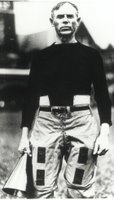
Technique sprints are focused on combining and practicing the elements of acceleration – elements such as breathing, gearing choice, shifting, leg speed, vision (foreward and behind), relaxation…
Breathing ~ one of the weirdest things I see folks do as they start their sprint is … scrunch up their body in one giant clench … like they’re going to heft up a huge box, or maybe pinch off an uncooperative loggie. These clenchings are with held breath and maxed out muscles, tightened into a spasmodic ball of impotent effort.
Sprints last many, many … many seconds. In fact, some sprints have lasted a couple of eternities, as I recall. Ouch.
You need oxygen to sprint. You need it desperately. So, BREATHE! My favorite technique to get more O2 into my system is to exhale a relatively slow and deep breath as I begin the first few pedalstrokes of my sprint. By letting out a nice long push of breath as you start the sprint, you force the body into taking a big ole gulp AND you really can improve your overall relaxation of body and mind.
Gearing choice ~ don’t shift to start a sprint! When you sprint, you should be in the right gear and should not need to shift. You don’t won’t to overload your muscles by slamming down two gears to start your acceleration. All you’re doing is flooding your muscles and slowing your body down. The first 4 or 5 pedalstrokes can be quick, lively things that shoot your speed up. And, you get to not alert the universe to your intention by the “CLANK, CLANK” of your drive train.
Shifting ~ this is one of the keys to excellent acceleration and ONLY comes through much, much practice. You’ve got to be completely in tune with your bike, in joyous harmony with it. You’ve got to reach a level of intuition with your machine that moves you to shift at just the right moment and only 1 cog at a time. You should be able to downshift and upshift during your sprint. Practice, practice, practice. Mostly, it’s about shifting during the dead-zone of your pedalstroke, because shifting under extreme power loads does nothing for acceleration. Your shifting should be smooth, quiet, and timed just right.
Practice.
Leg Speed ~ sprint at a high rpm.
’nuff said.
If you need to work on leg speed – do your sprints on a slight decline. Trust me, it really helps.
Vision~ as you are out of the saddle, sprinting … practice glancing down at your saddle. Then, after you become comfortable looking briefly at your saddle, move your line of sight just slightly over through that gap between your elbow and your hip. On both sides. Then, when you get familiar with that, practice glancing down to look through the gap created by your butt and your saddle. Once you get that, you’ll be able to accelerate quickly and check to see who’s on your wheel and which direction they’re coming. Very useful – but this is an advanced technique.
Relaxation ~ the most important element. The more relaxed you are, the more power you will generate. Breathing is how I remind myself to relax – what will your technique be? Twiddling the toes? Opening your fingers from the bar? Running your tongue around the lips? mmmm…
The more relaxed you are, the faster you will accelerate, the more precise your shifting will be, the longer your acceleration will last, and the faster you will recover.


